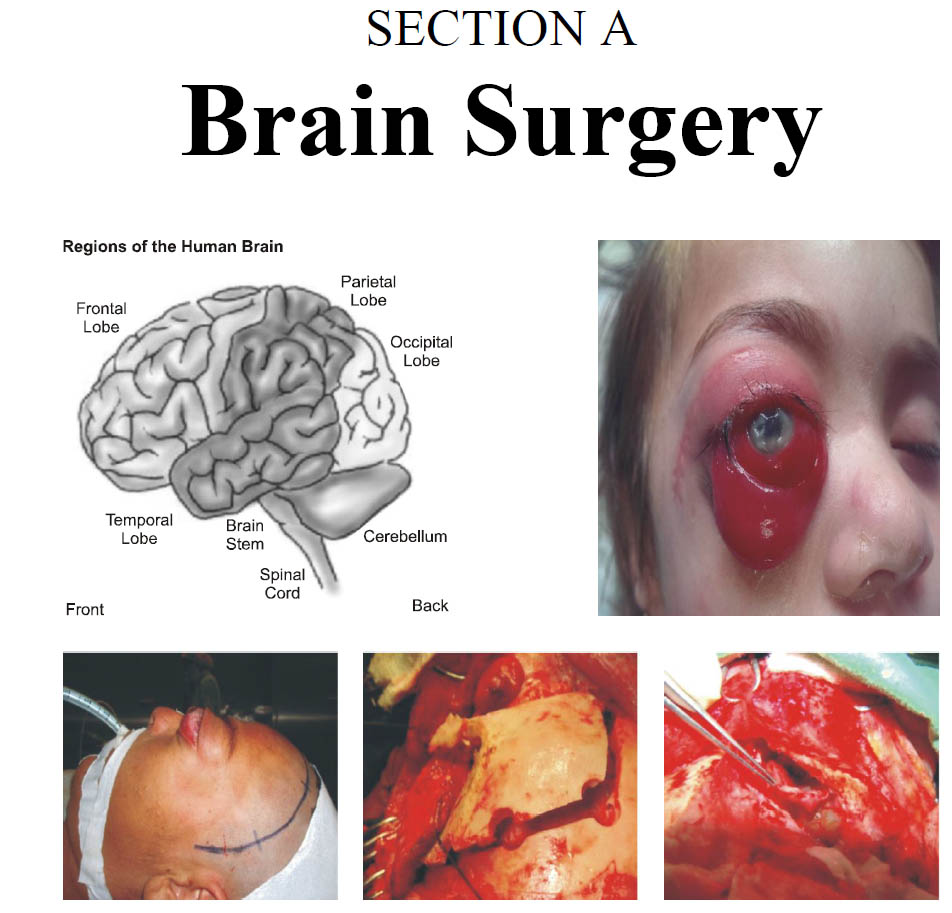Outcome of Endoscopic Repair of CSF Rhinorrhea with Endonasal Endoscopic Approach in terms of Success of Repair.
DOI:
https://doi.org/10.36552/pjns.v23i4.378Keywords:
CSF Rhinorrhea, Endonasal Endoscopic Approach, Successful RepairAbstract
Objective: This descriptive case series conducted to evaluate the outcome of CSF rhinorrhea repair with the Endonasal Endoscopic approach in terms of success of the repair.
Materials and Methods: The study was conducted at Neurosurgery department, Unit II, Punjab institute of neurosciences, Lahore. This study involved 40 patients aged between 3-80 years of both genders diagnosed of CSF rhinorrhea with presented with in 1 week after trauma and spontaneous and postoperative cases.
Results: The age of the patients ranged from 5 years to 53 years with a mean of 22.75 ± 15.59 years. Total 30 (75%) male and 10 (25%) female patients are included in the study. The underlying etiology was found to be post-traumatic (67.5%) 27 cases, followed by post-operative in 7 (17.5%) and spontaneous in 6 (15.0%) cases. Successful repair was observed in 36 (90.0%). No significant difference was found in the frequency of successful repair among various age groups; 5-20, 21-36 and 37-53 years (95.7%, 83.3% and 81.8%; p = 0.381), gender groups; male verses female (86.2% and 100.0%; p = 0.194) and etiological groups; post-traumatic vs. post-operative vs. spontaneous (92.6% vs. 71.4% vs. 100.0%; p = 0.169).
Conclusions: The frequency of successful repair was found to be 90% in patients of CSF rhinorrhea treated through Endonasal endoscopic approach. No statistically significant difference was found in successful repair frequency across patient’s gender, age and underlying cause of CSF rhinorrhea.
References
1. Hegazy HM, Carrau RL, Snyderman CH, Kassam A, Zweig J. Transnasal endoscopic repair of cerebrospinal fluid rhinorrhea: a meta-analysis. Laryngoscope 2000;110(7):1166–72.
2. Loew F, Pertuiset B, Chaumier EE, Jaksche H. Traumatic, spontaneous and postoperative CSF rhinorrhea. Adv Tech Stand Neurosurg 1984; 11:169–207.
3. Friedman JA, Ebersold MJ, Quast LM. Post-traumatic cerebrospinal fluid leakage. World J Surg 2001; 25:1062–6.
4. Banks CA, Palmer JN, Chiu AG, O'Malley BW Jr, Woodworth BA, Kennedy DW, et al. Endoscopic closure of CSF rhinorrhea: 193 cases over 21 years. Otolaryngol Head Neck Surg 2009; 140:826–33.
5. Yilmazlar S, Arslan E, Kocaeli H, Dogan S, Aksoy K, Korfali E, et al. Cerebrospinal fluid leakage complicating skull base fractures: analysis of 81 cases. Neurosurg Rev 2006;29(1):64–71.
6. Asano T, Ohno K, Takada Y, Suzuki R, Hirakawa K, Monma S, et al. Fractures of the floor of the anterior cranial fossa. J Trauma 1995; 39:702–6.
7. Bell RB, Dierks EJ, Homer L, Potter BE. Management of cerebrospinal fluid leak associated with Craniomaxillofacial trauma. J Oral Maxillofac Surg 2004;62(6):676–84.
8. Marshall AH, Jones NS, Robertson IJ. CSF rhinorrhea: The place of endoscopic sinus surgery. Br J Neurosurg 2001; 15:8-12.
9. Ray BS, Bergland RM. Cerebrospinal fluid fistula: clinical aspects, techniques of localization and methods of closure. J Neurosurg 2007; 30:399–405.
10. Kumar BR, Sahu R, Srivastava AK, Nair AP, Mehrotra A. Surgically repaired posttraumatic CSF rhinorrhea: An institutional experience and review of literature. Indian J Neurosurg 2012; 1:23-7.
11. Burns JA, Dodson EE, Gross CW. Transnasal endoscopic repair of cranionasal fistulae: a refined technique with long term follow up. Laryngoscope 1996; 106:1080-3.
12. Neena H, Bhalodiya P, Shawn TJ. Cerebrospinal fluid Rhinorrhea: Endoscopic repair based on a combined diagnostic approach. Indian J Otolaryngol Head Neck Surg 2009; 61:120-6.
13. Mattox DE. Kennedy DW. Endoscopic management of cerebrospinal fluid leaks and encephalocele. Laryngoscope 1990; 100:857-62.
14. Rohiy S, Produl H, Nayak DR, Balakrishanan R, Hazarika M, Ansulsingh K, et al. Endoscopic repair of cerebrospinal fluid Rhinorrhea-manipal Experience. Ind J Otolaryngol Head Neck Surg 2009;61(1):14-8.
15. Sharma DP, Singh D, Sinha S, Srivastva AK, Singh H, Jagetia A. CSF rhinorrhea: An overview of endoscopic repair. J Ind Neurotr 2010;2(7):157-62.
16. Dodson EE, Gross CW, Swerdloff JL, Gustafson LM. Trans nasal endoscopic repair of cerebrospinal fluid rhinorrhea and skull base defect: a review of twenty-nine cases. Otolaryngology Head Neck Surg 2014; 111:600–5.
17. Hirsch O. Successful closure of cerebrospinal fluid rhinorrhoea by Endonasal surgery. Arch Otolaryngol 1952; 56:1–13.
18. Park JI, Strelzow VV, Friedman WH. Current management of cerebrospinal fluid rhinorrhoea. Laryngoscope 1983; 93:1294–1300.
19. Hubbard JL, McDonald TJ, Pearson BW, Laws ER. Spontaneous cerebrospinal fluid rhinorrhoea: evolving concepts in diagnosis and surgical management based on the Mayo Clinic experience from 1970 through 1981. Neurosurgery1985; 16:314–21.
20. Lindstrom D R, Toohill R J, Loehrl T A, Smith T L. Management of cerebrospinal fluid rhinorrhea: The Medical College of Wisconsin experience. Laryngoscope 2004; 114:969–74.
21. Kirtane MV, Gautham K, Upadhyaya SR. Endoscopic CSF rhinorrhea closure: our experience in 267 cases. Otolaryngol Head Neck Surg 2005;132(2):208-12.
22. Farooq MU, Ansari MA. Cerebrospinal fluid rhinorrhea: etiology, site of leakage and endoscopic management. J Coll Physicians Surg Pak 2011;21(8):460-3.
23. Bhatti SN, Khan SA, Shah R, Aurangzeb A, Ahmed E, Rizvi F, et al. Trans nasal endoscopic repair of cerebrospinal fluid rhinorrhea. J Ayyub Med College Abbott 2011;23(2):15-7.

Downloads
Published
Issue
Section
License
Copyright (c) 2019 Muhammad ishfaq, Talha Abbas, Muhammad Akmal, Nabeel Choudhry, Adeeb ul Hassan, Omair Afzal, Imran Siddiqui, Khalid MahmoodThe work published by PJNS is licensed under a Creative Commons Attribution-NonCommercial 4.0 International (CC BY-NC 4.0). Copyrights on any open access article published by Pakistan Journal of Neurological Surgery are retained by the author(s).












